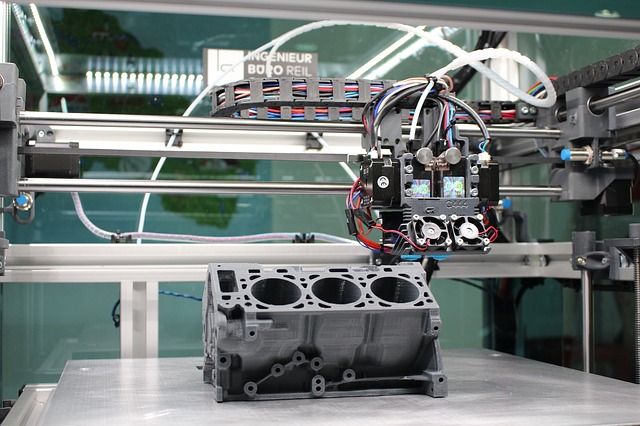VW Introduces 3D Printing to Mass Production

The topic of 3D printing is mentioned in the context of modern technologies with a strong growth potential more and more often. As the first car manufacturer, Volkswagen is introducing it to mass production of vehicles. An interesting article on this topic was published by Supplychaindigital.com.
The automotive giant is about to implement the “HP Metal Jet” technology that simplifies and speeds up metallic 3D printing productivity by up fifty times in comparison to other technologies.
The Collaboration of HP and GKN Powder Metallurgy Led to a Major Innovation
This project is being developed in collaboration with the HP printer manufacturer and GKN Powder Metallurgy, and was presented for the first time by the stakeholders at the International Manufacturing Technology Show in Chicago.
Dr Martin Goede, Head of Technology Planning and Development, Volkswagen, said: “Automotive production is facing major challenges: our customers are increasingly expecting more personalisation options. At the same time, complexity is increasing with the number of new models. That’s why we are relying on state-of-the-art technologies to ensure a smooth and fast production. 3D printing plays a particularly important role in manufacturing of individual parts.”
Significant Time and Equipment Savings
By default, 6 to 8 thousand different parts are used for manufacturing of a Volkswagen vehicle, depending on the specific model. So far, however, 3D technology has only been used for special production of individual components or prototypes. The HP technology of today enables the manufacturing of a large number of parts with 3D printing, without the need to develop and produce the appropriate manufacturing equipment.
Obviously, this technology reduces the time required for production and therefore, large-volume manufacturing is possible in a short period of time. “That’s why the new HP Metal Jet platform is an important step into the future for us as an automotive manufacturer, but also for the entire industry. And we look forward to helping shape this development and thus creating further added value for our customers in the future,” Dr Goede added.
How Fast Will This Technology Actually Be Implemented?
Usually, it is a long way for an idea to be actually implemented. However, GKN Powder Metallurgy is planning to start producing parts for the automotive industry, of course, with Volkswagen, next year. The first small components will be used for further development of the technology, so the first structural parts should be printed within 2-3 years. “A complete vehicle will probably not be manufactured by a 3D printer any time soon, but the number and size of parts from the 3D printer will increase significantly.”
“Our goal is to integrate printed structural parts into the next generation of vehicles as quickly as possible. In the long term, we expect a continuous increase in unit numbers, part sizes and technical requirements,” said Dr Goede in conclusion.
Related articles
Jun 7, 2024
DJI introduces its first delivery drone
DJI introduces its first delivery drone
Jun 7, 2024
5 expert insights into the world of dynamic simulations and logistics
5 expert insights into the world of dynamic simulations and logistics
Apr 2, 2024